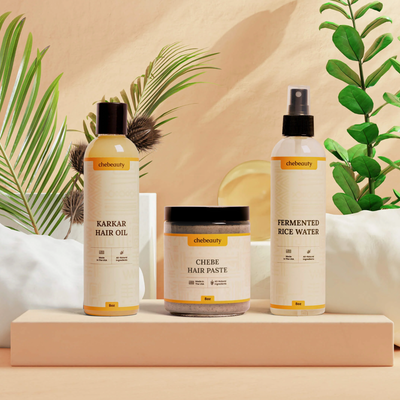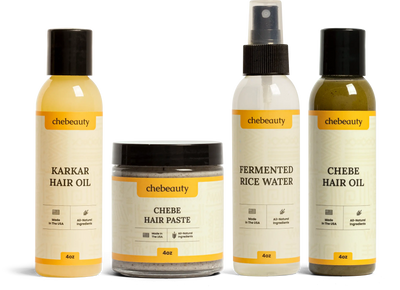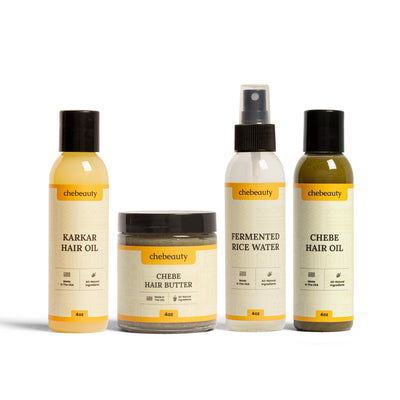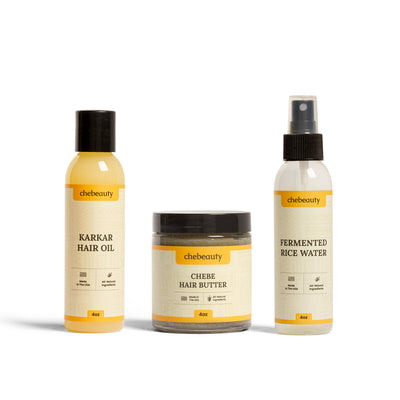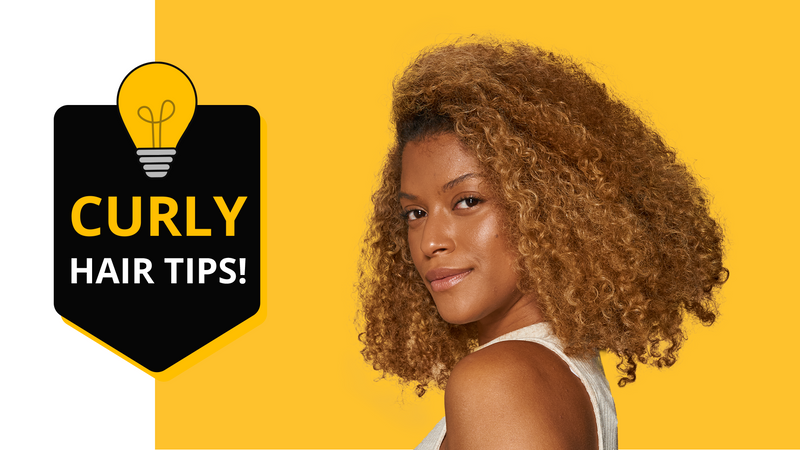Welcome to the most comprehensive guide on mastering wavy hair! Whether you're just starting your journey or seeking to enhance your existing routine, this guide is here to support you all the way through. Wavy hair is a beautiful and unique hair type that requires specific care and attention to truly shine. In this guide, we'll delve into everything you need to know about caring for your waves, from understanding their characteristics to exploring the best techniques and products for maintenance.
Importance of Proper Care and Maintenance for Wavy Hair
Effective care and maintenance are essential for keeping wavy hair looking its best. Without the right routine, waves can become limp, frizzy, or lose their definition. By understanding your hair's unique needs and employing the appropriate techniques and products, you can unlock its full potential and achieve stunning results.
Introduction to the Blog's Main Focus: Caring for Wavy Hair
In this blog, we'll focus on providing practical advice and tips for caring for wavy hair. Whether you're a beginner looking to establish a basic routine or an enthusiast looking for more advanced tips, you'll find valuable insights and actionable steps to elevate your wavy hair game. From cleansing and conditioning to styling and maintenance, we've got you covered every step of the way. Let's embark on this journey to master your wavy locks together!
Understanding Wavy Hair
What Defines Wavy Hair?
Wavy hair occupies a unique space between straight and curly textures, showcasing gentle bends and curves that contribute to its characteristic volume and movement. These waves are typically more prominent towards the mid-lengths and ends, creating a soft and effortless appearance. While wavy hair shares some similarities with curly hair in terms of texture, its patterns are generally looser and less tightly coiled. However, like curly hair, wavy hair can also be heavily prone to frizz and requires careful maintenance to preserve its shape and definition.
Different Types of Waves and Their Characteristics
Wavy hair encompasses a spectrum of types, each with its own distinct characteristics and styling needs.
Type 2A: Type 2A waves are the subtlest of the wavy spectrum, featuring loose bends that gently cascade down the hair shaft. This type tends to be relatively fine and easy to manage, with waves that are more pronounced towards the ends.
Type 2B: Type 2B waves are more defined, forming distinct "S" shapes throughout the hair. This type typically has a medium texture and offers a balance between subtle waves and more pronounced curls. Type 2B waves may require products that provide definition while maintaining volume.
Type 2C: Type 2C waves are well-defined with a more pronounced "S" pattern and a thicker texture. This type tends to be prone to frizz and dryness, requiring extra moisture and styling products to maintain shape and manageability. Type 2C waves often benefit from techniques such as scrunching and diffusing to enhance their natural bounce and texture.
Understanding your specific wave pattern is essential for choosing the right products and techniques to enhance your hair's natural beauty.
Common Challenges Faced by Individuals with Wavy Hair
Wavy hair comes with its own set of challenges that individuals often encounter in their hair care routines.
Frizz: Wavy hair is susceptible to frizz due to its textured nature, especially in humid environments. Frizz occurs when the hair cuticle becomes lifted, allowing moisture to penetrate and disrupt the smooth surface of the hair shaft. Managing frizz requires hydrating products and techniques that help seal the cuticle and prevent moisture from entering the hair shaft.
Lack of Definition: Without proper care and styling, waves can lose their shape and definition, resulting in a lackluster appearance. This can be particularly noticeable in wavy hair types with looser waves, such as Type 2A, where the waves may appear limp or undefined. To combat this issue, individuals with wavy hair may benefit from using styling products that enhance curl definition and encourage natural movement.
Product Build-Up: Wavy hair can become weighed down by heavy styling products, leading to product build-up and a loss of volume and texture. Product build-up occurs when styling products, such as gels, mousses, or serums, accumulate on the hair shaft, creating a barrier that prevents moisture from penetrating the hair. To avoid product build-up, it's important to use lightweight, water-soluble products and incorporate regular clarifying treatments into your hair care routine.
Basic Care Routine for Wavy Hair
Establishing a basic care routine tailored to the specific needs of wavy hair is essential for maintaining its health and enhancing its natural beauty.
Cleansing: Choosing the Right Shampoo
Opt for shampoos with gentle formulas that cleanse the hair without stripping away its natural oils, which can lead to dryness and frizz. This means focusing on products that have minimal chemical composition and are mostly composed of natural ingredients. Great example of such ingredient would be Chebe Shampoo, which not only hydrates your hair but also maintains the moisture from wash to wash.
Conditioning: Importance of Moisture and Hydration for Wavy Hair
A well-chosen conditioner together with the right shampoo is the foundational power couple of every thorough hair routine for wavy hair. Just like in case with the shampoo, it’s crucial that a conditioner has to be moisturizing, as well as contain ingredients that will not only not harm your hair but actually nourish it. For example, the perfect side-kick to Chebe Shampoo would be Chebe Leave-In Conditioner. This lightweight formula not only provides the necessary hydration, but also helps detangle knots, reduce frizz, and enhance the natural texture of wavy hair, leaving it smooth and manageable.
Detangling: Techniques to Prevent Breakage and Minimize Frizz
While a good quality hair conditioner is very important for detangling and reducing frizz, there are ways in which you can aid your wavy hair to achieve even better results. In particular, a protein-filled solution like Rice Water would be a perfect bonus to a strong conditioner. Rice water helps to smooth the hair cuticle, reduce frizz, and improve manageability, leaving wavy hair soft and shiny.
Drying: Air-Drying vs. Diffusing for Optimal Wave Definition
Allow wavy hair to air-dry naturally to minimize heat damage and preserve its natural texture. To enhance wave definition, gently scrunch the hair while it's drying to encourage the formation of curls and waves. Additionally, try to use a diffuser attachment on your hairdryer to speed up the drying process while minimizing frizz. Diffusing helps to evenly distribute airflow and encourages the natural pattern of wavy hair, resulting in enhanced volume and definition.
Protective Styling: Tips for Overnight Care to Preserve Waves
Switch to satin or silk pillowcases to reduce friction and prevent hair breakage while you sleep. As for the hairstyles, secure wavy hair in loose braids or a pineapple hairstyle before bed to prevent tangles and preserve wave definition overnight. Alternatively, wrap wavy hair in a silk or satin scarf to protect it from friction and maintain moisture levels while you sleep.
Advanced Techniques for Enhancing Wavy Hair
Take your wavy hair routine to the next level with advanced techniques designed to enhance texture, definition, and overall appearance.
Scrunching: How to Scrunch for Volume and Definition
Product Application: Apply a styling product, such as a curl-enhancing gel or mousse, to damp hair.
Technique: Use your hands to gently scrunch sections of hair upwards towards the scalp, squeezing the hair between your fingers to encourage curl formation.
Diffusing: For added volume and definition, use a diffuser attachment on your hairdryer to dry the hair while scrunching. This helps to set the waves in place and create bouncy, defined curls.
Curl Enhancing Techniques: Using Gels, Creams, and Mousses to Define Waves
Product Selection: Choose styling products specifically formulated for enhancing waves and curls, such as lightweight gels, creams, or mousses.
Application: Distribute the product evenly through damp hair, focusing on the mid-lengths and ends where waves are most prominent.
Techniques: Experiment with different application techniques, such as raking, scrunching, or finger-coiling, to maximize curl definition and minimize frizz.
Layering: For added hold and definition, layer different products to create a customized styling cocktail that suits your hair type and desired look.
By incorporating these advanced techniques into your wavy hair routine, you can achieve stunning results with enhanced volume, definition, and manageability. Experiment with different methods to find the ones that work best for your unique hair texture and styling preferences.
Tips for Healthy Wavy Hair
Maintaining the health and vitality of your wavy hair is crucial for achieving beautiful and manageable waves. Here are some essential tips to keep your waves looking their best:
Avoiding Heat Damage: Alternatives to Excessive Heat Styling
Air-Drying: Embrace the beauty of your natural waves by allowing your hair to air-dry whenever possible. Air-drying not only minimizes exposure to heat but also helps preserve your hair's natural texture and reduce the risk of damage.
Low Heat Setting: When heat styling is unavoidable, opt for the lowest heat setting on your hairdryer, curling iron, or flat iron. Lower temperatures are gentler on your hair and less likely to cause damage such as dryness, breakage, and split ends.
Heatless Styling: Explore heatless styling techniques as alternatives to traditional heat styling tools. Braiding, twisting, or using foam rollers on damp hair can create beautiful waves without subjecting your hair to high temperatures, allowing it to maintain its health and integrity.
Trimming: Importance of Regular Trims for Maintaining Healthy Ends
Preventing Split Ends: Regular trims are essential for removing split ends, which can travel up the hair shaft and cause further damage if left untreated. By scheduling trims every 8-10 weeks, you can keep your ends healthy and prevent breakage, promoting overall hair health and vitality.
Promoting Growth: Trimming your hair regularly not only eliminates split ends but also stimulates hair growth. By maintaining healthy ends, you create a conducive environment for hair growth, ensuring that your waves grow longer, stronger, and more beautiful over time.
Consulting a Professional: When it comes to trimming wavy hair, seeking the expertise of a professional hairstylist is key. A skilled stylist can assess your hair's condition, understand your wave pattern, and tailor the trimming process to complement your natural texture, ensuring that your waves look their best after each trim.
Protecting from Environmental Damage: UV Protection and Pollution Defense
UV Protection: Just like your skin, your hair can suffer damage from prolonged sun exposure. Shield your hair from the sun's harmful UV rays by wearing a wide-brimmed hat or applying hair care products containing UV filters. These products act as a barrier, preventing UV radiation from penetrating the hair shaft and causing dryness, brittleness, and color fading.
Pollution Defense: Pollution and environmental toxins can accumulate on your scalp and hair, leading to dullness, dryness, and scalp irritation. Combat environmental damage by washing your hair regularly with a gentle shampoo that removes impurities without stripping away natural oils. Additionally, consider using clarifying treatments or scalp scrubs to deep-cleanse the scalp and remove stubborn buildup, leaving your hair feeling fresh, clean, and rejuvenated.
Scalp Care: Importance of a Healthy Scalp for Overall Hair Health
Proper Treatment: Your scalp requires just as much care and attention as your curls do, since without a healthy scalp, you won’t get the perfect environment for your healthy, glowing curls to grow and prosper. That’s why you need products such as Karkar Oil that have antifungal and antibacterial properties, ensuring complete protection of your scalp and hair alike.
Scalp Massage: Stimulate blood circulation to the scalp by massaging it gently with your fingertips during shampooing. Scalp massage not only feels relaxing but also promotes nutrient delivery to the hair follicles, encouraging healthy hair growth and scalp health. Take a few extra minutes in the shower to massage your scalp in circular motions, paying attention to areas prone to tension and buildup.
Balanced Diet: Nourish your scalp from the inside out by maintaining a balanced diet rich in essential nutrients such as vitamins, minerals, and proteins. Incorporate foods that promote hair health, such as leafy greens, lean proteins, nuts, seeds, and fatty fish. Hydrate your body by drinking plenty of water to keep your scalp and hair adequately moisturized, preventing dryness, flakiness, and irritation. A healthy scalp provides the foundation for strong, vibrant hair, so prioritize scalp care as part of your overall hair care routine.
Styling Tips for Desired Wavy Hair Look
Mastering the art of styling wavy hair involves understanding various techniques to achieve your desired look. Here are some detailed tips to help you perfect your wavy hairstyle:
Beach Waves: Achieving Effortless, Tousled Waves
Salt Spray: Invest in a high-quality salt spray or create your own by mixing sea salt with water in a spray bottle. Apply the salt spray to damp hair, focusing on the mid-lengths and ends, then scrunch your hair to create texture and enhance waves. Allow your hair to air-dry or use a diffuser on a low heat setting for a natural-looking tousled effect.
Twist and Pin: After applying a styling product suited for wavy hair, twist small sections of your hair loosely and secure them with bobby pins or hair clips. Allow your hair to air-dry or use a diffuser to speed up the process. Once your hair is dry, gently unravel the twists to reveal effortless waves with added texture and volume.
Loose Braids: Before bedtime, divide your damp hair into several loose braids. For a more relaxed look, create larger braids; for tighter waves, opt for smaller sections. In the morning, undo the braids and run your fingers through your hair to loosen the waves. Finish with a lightweight hairspray to set the style and maintain the tousled effect throughout the day.
Defined Waves: Techniques for Achieving Polished, Defined Waves
Curling Wand: Choose a curling wand with a larger barrel size to create soft, natural-looking waves. Working in sections, wrap strands of hair around the wand, leaving the ends out for a more relaxed finish. Hold the hair around the wand for a few seconds before releasing, then repeat the process until all sections are curled. Once your hair has cooled, gently tousle the waves with your fingers to loosen them and create a more natural appearance.
Finger-Coiling: For tighter and more defined waves, apply a curl-enhancing cream or gel to damp hair. Working in small sections, wrap each strand around your finger, starting from the roots and moving towards the ends. Hold the coil in place for a few seconds before releasing and repeating the process throughout your hair. Allow your hair to air-dry or use a diffuser on a low heat setting to set the curls. Once dry, scrunch your hair to break up the coils and enhance the volume and definition of your waves.
Layered Products: To ensure long-lasting definition and hold, layer your styling products strategically. Start with a lightweight leave-in conditioner or curl-enhancing cream to hydrate and define your waves. Follow up with a gel or mousse to provide additional hold and structure. Distribute the products evenly through your hair, focusing on the mid-lengths and ends where waves are most prominent. Scrunch your hair as you apply the products to encourage curl formation and enhance wave definition.
Volume Boosting: Tips for Adding Volume to Wavy Hair
Root Lifting Products: Look for volumizing mousses, sprays, or foams designed to add lift and volume at the roots. Apply the product directly to the roots of your damp hair, then use your fingers or a comb to distribute it evenly. For maximum lift, flip your head upside down and blow-dry your roots using a round brush or your fingers to lift the hair away from the scalp.
Teasing: For targeted volume at the crown or roots, gently backcomb or tease small sections of hair using a fine-tooth comb or a teasing brush. Start at the roots and work your way down towards the mid-lengths, focusing on areas where you want to add lift and fullness. Once you've achieved the desired volume, smooth the surface of your hair with a soft-bristled brush to blend the teased sections seamlessly.
Diffuser Technique: To boost volume and enhance the natural texture of your wavy hair, use a diffuser attachment on your blow dryer. After applying your styling products, flip your head upside down and diffuse your hair on a low heat and low airflow setting. Gently scrunch your hair as you diffuse to encourage curl formation and create lift at the roots. Once your hair is dry, flip it back over and use your fingers to tousle the roots for added volume and texture.
Experiment with these styling techniques and tips to achieve your desired wavy hair look, whether you prefer effortless beach waves, defined curls, voluminous waves, or a sleek, polished style. With patience, practice, and the right products, you can master the art of styling wavy hair to perfection.
Conclusion
Recap of Key Points Discussed in the Blog
Throughout this guide, we've explored various aspects of caring for wavy hair, from understanding its unique characteristics to mastering advanced styling techniques. Here's a recap of the key points covered:
- Understanding Wavy Hair: We delved into what defines wavy hair, the different types of waves, and common challenges faced by individuals with wavy hair.
- Basic Care Routine: We discussed essential steps for cleansing, conditioning, detangling, drying, and protective styling to maintain healthy wavy hair.
- Advanced Techniques: We explored techniques for enhancing wavy hair, such as scrunching, plopping, and curl enhancing, to achieve desired looks.
- Tips for Healthy Wavy Hair: We provided tips for avoiding heat damage, the importance of regular trims, protecting from environmental damage, and maintaining scalp health.
- Styling Tips: We offered styling tips for achieving desired wavy hair looks, including beach waves, defined waves, volume boosting, and taming frizz.
Encouragement for Readers to Embrace and Celebrate Their Wavy Hair Texture
Embracing your wavy hair texture is an empowering journey that allows you to celebrate your natural beauty and individuality. Your waves are a unique expression of who you are, and they deserve to be showcased with pride. Whether you prefer relaxed beach waves, defined curls, or voluminous waves, embracing your wavy hair texture opens up endless possibilities for creative expression and self-confidence.
Final Thoughts on the Importance of a Personalized Hair Care Routine for Wavy Hair
Creating a personalized hair care routine tailored to your wavy hair's specific needs is essential for maintaining its health, vitality, and beauty. By understanding your hair's unique characteristics and investing in high-quality products and techniques, you can achieve stunning results that elevate your wavy locks to new heights. Remember that consistency and patience are key on your journey to mastering wavy hair care. With dedication and the right approach, you can unlock the full potential of your waves and enjoy healthy, beautiful hair every day.
Embrace your waves, celebrate your unique beauty, and continue to nurture and care for your wavy hair with love and attention. Your waves are a beautiful reflection of who you are, and they deserve to be cherished and celebrated. Here's to embracing the beauty of wavy hair and embracing your natural texture with confidence and pride!















